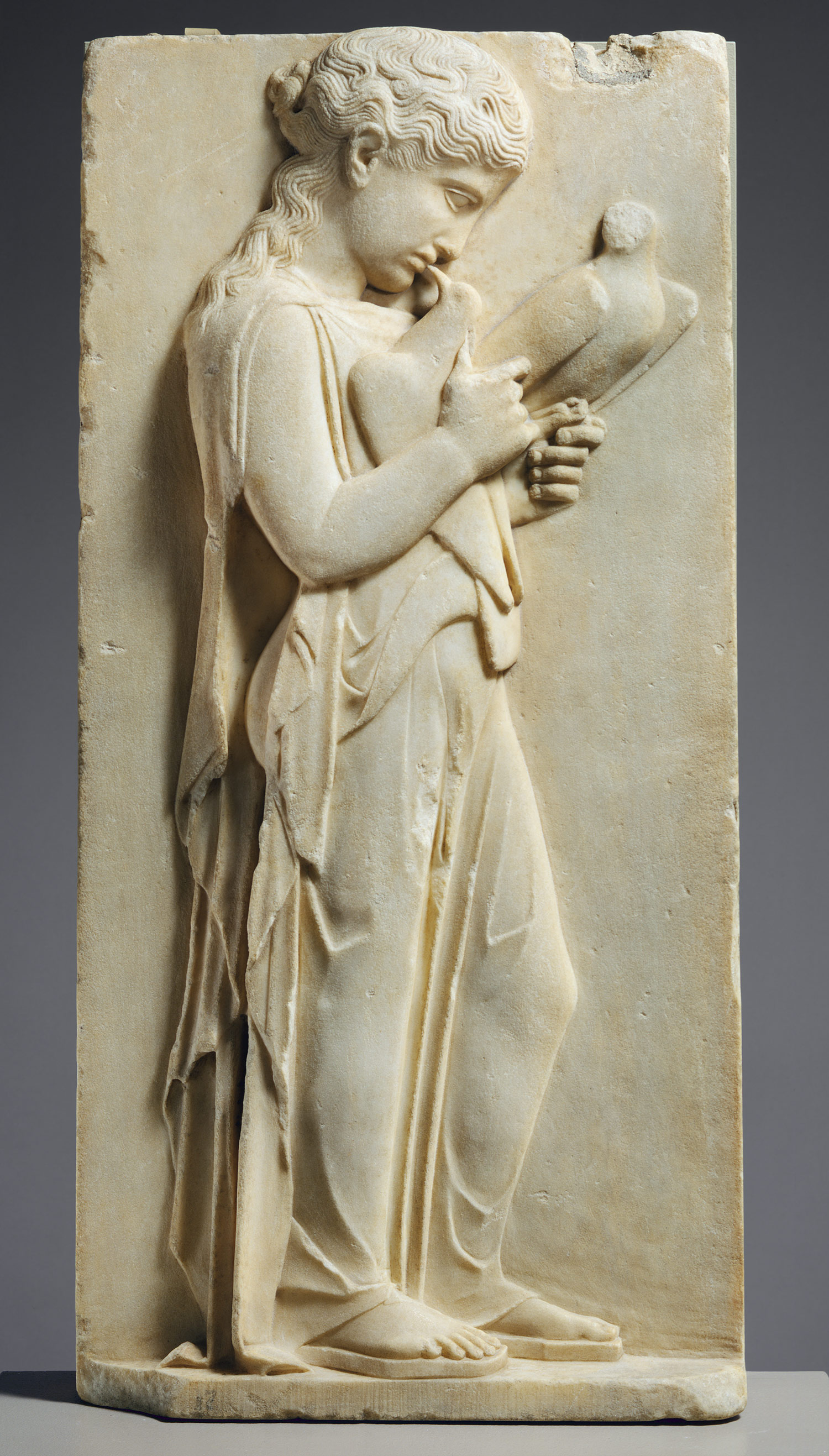The first post in what will be a series profiling the talented makers who are producing one-off hand-made beads for Big Bead Little Bead.
Many of the beads produced by MaaP Studio for Big Bead Little Bead, such as the dotty beads illustrated above, are made from a type of porcelain known as parian. Parian is a self-glazing bisque or biscuit porcelain that when fired has a subtle matte sheen supposed to resemble the pure coloured, semi-translucent white marble found on the Greek Island of Paros - the name parian is derived from 'Paros'. The Victorians developed quite a fancy for the ceramic marble substitute, and a whole industry sprung up creating forms of parian ware busts, figures and small dishes and vases.
Left: Greek stelai or memorial stone. Paros marble 450-440 BC. Metropolitan Museum of Art, New York
Right: Jug depicting scenes from Shakespeare. Parian ware Staffordshire Potteries c. 1844. V&A Museum, London
The process of making beads from parian is a lengthy one, as aside from the time consuming hand modelling and decorating processes, the beads need to be fired twice. The first firing hardens the clay and 'sets' the shape of the bead. The bead may then be hand decorated with coloured glazes or slips (a watery clay solution) and fired for a second time, but now at the higher temperature of 1240 ºC. This latter firing precipitates the reaction needed for the glaze and slip colourings to develop, and it drives any remaining moisture from the clay. The second firing also ensures that the beads are robust - akin to annealing lampwork. Each time the beads enter the kiln it is at least a 12 hour cycle for the kiln to get up to the required temperature, fire and then cool down slowly. The kiln can only be opened once the temperature has dropped back to around 100 ºC.
Monika Skrzypkowska takes inspiration from forms found in nature, and her pieces express the contradictory power of nature to be both delicate and strong. Hand painted veining drapes a bead as hard as the marble it is named for (above), pools of glaze sit upon the crystalline surface of a bead that may have been drawn from the sea or dug from the ground (below).
Monika uses her experience as a jewellery designer to suggest creative possibilities for the use of a bead, hence the two-way holes in some her pieces such as the beads at the top of this post (and below). They have a horizontal hole on the rear of the bead and a hole running front to back, thus allowing the bead to be strung or attached in different ways.
To view more of Maap Studio's work head to Big Bead Little Bead for beads, and their Etsy shop for handmade jewellery.
Our Social Media Links:







No comments:
Post a Comment